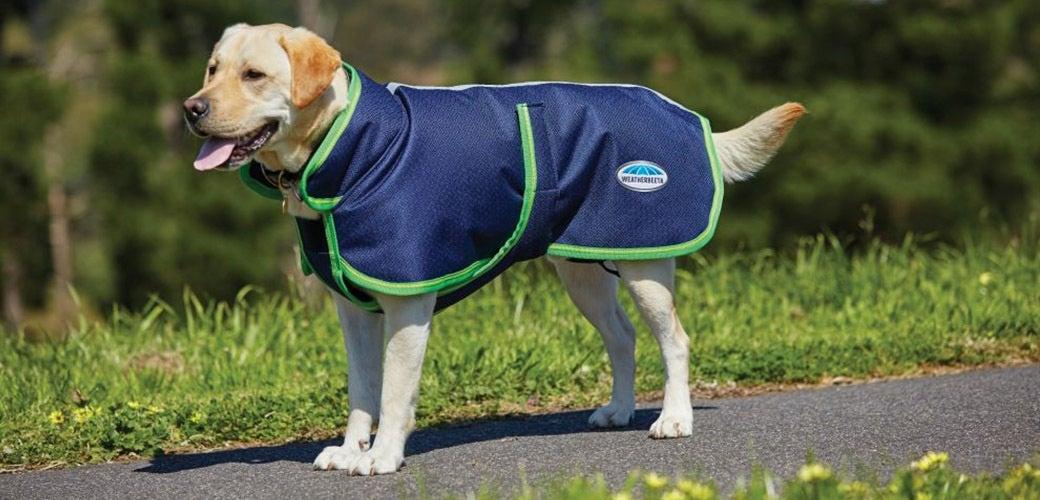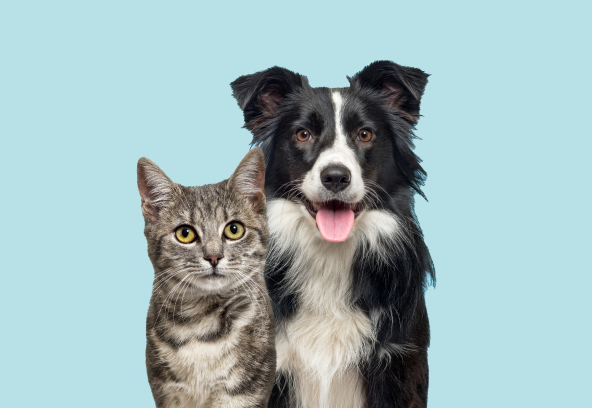
There is no harm putting clothes on your dog.

Many dogs are not genetically suited to environments they are in. Your dog may in fact be extremely uncomfortable with winter temperatures...
There is no harm putting clothes on your dog. If you are still on the fence consider this: dogs come equipped with their own external coats but some dogs have lighter layers than others. Many dogs are not genetically suited to environments in which they find themselves in. Your dog may in fact be extremely uncomfortable with winter temperatures – as uncomfortable as you would be if you went outside without clothing!
Does Your Dog Need Clothes?
A jumper or jacket can be helpful during the colder months when your dog is more reluctant to go outside in the cold to relieve himself. Additionally, you may want to keep your home’s internal heating set low – depending instead on blankets and clothing for your own warmth.
How warm your dog is able to physically keep himself may depend on their breed, size and age. However, if they just don’t have a heavy coat there is only so much curling up they can do to conserve heat. Smaller, lighter breeds, toy breeds and breeds that naturally have very short coats or thin hair can benefit from a warm dog jumper.
Of course, short or thin hair is not the only prerequisite for doggy clothing. Dogs that tend to get shaved often at the groomers should also be given a jumper to protect them from cold temperatures. Older dogs with weaker immune systems and dogs with diseases that impair hair growth (e.g. Cushing’s disease or hypothyroidism) typically need extra warmth which can easily be provided by a jumper or jacket – even indoors.
On the other hand, some larger dogs with dense coats do not have a need for additional insulation – they would be uncomfortable or overheat if they were forced to wear clothing. Their fur is already designed to protect them sufficiently. The Siberian Husky, Malamute and Saint Bernard are all excellent examples of dogs that are perfectly suited to cold temperatures; whilst the Chihuahua, Greyhound and many terrier and pinscher breeds are good examples of breeds that would benefit with extra insulation!
Find a Good Jumper
Once you have decided to get a jumper for your dog you will need to begin thinking about fabric. Wool is very warm and one of the best insulating materials but take into account how often it will need to be washed and whether it will make your dog itch. A good blend of washable wool and cotton or acrylic may be the best bet.
Secondly, just as you would measure yourself before buying a piece of clothing, measuring your dog is the best way to get the best fit. It is important to make sure your dog can not easily pull it off, it doesn’t drag and doesn’t get caught on anything during movement. You want their jumper to be snug without being tight.
The most important areas to measure are around the neck, around the largest part of the chest and the distance from the neck to the waist. The jumper’s length should end around the waist leaving the lower belly free. If possible, it is best to take your dogs along to the store with you to try the clothes before buying them as returns can be very difficult when it comes to clothing for animals.
Check especially around the armpit areas and around the neck to be sure there is freedom of movement and not too much excess material. Also choose pieces that are easy to put on and take off – you don’t want to have to pull tightly over your dog’s head or cause your dog to struggle!
Another important consideration is checking for any additional parts like zippers, buttons or tags. The best pieces will have nothing that can be chewed off and swallowed. Some outside jackets are made with hooks to attach a lead to but they are meant to be worn only under direct supervision.
It almost goes without saying but we will mention it anyway - dogs can not and should not wear pants!
With winter knocking this may also be the perfect time to take up knitting. Or if you prefer the pre-made option, head along to your local petshop for some inspiration!

